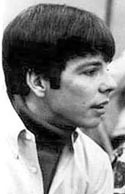
Tom, late '60s
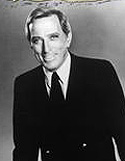
Andy Williams
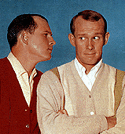
The Smothers Brothers
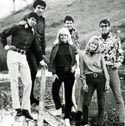
The Love Generation
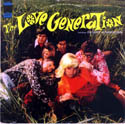
Their first album
Hear "Groovy Summertime"
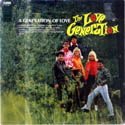
Their second album
Hear "Consciousness Expansion"

Montage, their third album
Hear "Montage"
TV Before the Partridges:
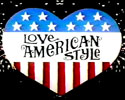
Love American Style
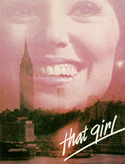
That Girl
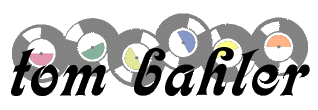
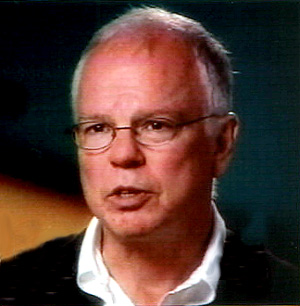 Fans of "The Partridge Family" know Tom Bahler as one of those "augmented"
voices that lent vocal and musical credibility to the songs produced for TV
and records. And while he may not be a household name, it is virtually
impossible to find anyone who hasn't heard at least one song that Tom Bahler
(pronounced Bay-ler) hasn't influenced. Whether as a Writer, Arranger,
Producer, Studio Singer, or all of the above, Tom has worked with giants
such as Elvis Presley, Quincy Jones, The Jackson 5ive, Billy Joel, Cher,
Barbra Streisand, and helped guide acts such as Bobby Sherman, The Monkees
and The Brady Kids. With his brother John, Tom also launched his own 1960s
psychedelic pop band called The Love Generation to a trio of albums and top
100 hits. Tom was gracious enough to spend countless hours reminiscing about
his career with Scott Awley and cmongethappy.com from February through June,
2000. So sit back and enjoy. We'll drive the bus.
Fans of "The Partridge Family" know Tom Bahler as one of those "augmented"
voices that lent vocal and musical credibility to the songs produced for TV
and records. And while he may not be a household name, it is virtually
impossible to find anyone who hasn't heard at least one song that Tom Bahler
(pronounced Bay-ler) hasn't influenced. Whether as a Writer, Arranger,
Producer, Studio Singer, or all of the above, Tom has worked with giants
such as Elvis Presley, Quincy Jones, The Jackson 5ive, Billy Joel, Cher,
Barbra Streisand, and helped guide acts such as Bobby Sherman, The Monkees
and The Brady Kids. With his brother John, Tom also launched his own 1960s
psychedelic pop band called The Love Generation to a trio of albums and top
100 hits. Tom was gracious enough to spend countless hours reminiscing about
his career with Scott Awley and cmongethappy.com from February through June,
2000. So sit back and enjoy. We'll drive the bus.
Get Happy: How did you get started in the music business?
Tom Bahler: My brother and I had big bands while we were in high school. We had a band called The Moonlighters. It was a 16-piece big band that was started by a friend of my brother's. When his friend left, my brother kept it, and when my brother went into the Navy, I took it over. We used to play a lot of gigs around town – proms, etc. It was a pretty good band and my brother did a lot of great arrangements for it. We had good personnel and we worked a lot. That was kind of our first foray into semi-pro music.
GH: What was the music industry like at the time?
TB: The music industry was changing a bit. This was early 60s. Folk music was becoming very popular. You had the Kingston Trio, Peter Paul and Mary, and others. And I liked it because the music was simple, but the message was strong. The other thing that interested me was that the girls really liked it. During that time, we met a lot of people at the Troubadour like Kenny Rogers and Kim Carnes. The New Christy Minstrels were going strong then and both Kenny and Kim were in the group. At that time, the group was on the Andy Williams Show [along with the Osmond Brothers] on NBC, but had to leave because their touring schedule was so busy. Dave Grusin was Andy’s musical director. Andy decided to form a new group and called it the Good Time Singers. I knew a lot of the guys who were chosen to sing and that’s when I got the call to join them. They wanted a tenor who played bass. But I couldn’t join then because I was a trumpet major at USC at the time and if I quit school I could have been drafted into the Vietnam War. That wasn’t going to work for me.
GH: What did you do?
TB: This was 1966 and my brother John, who is also a tenor, was just finishing up in the service. I asked him if he would be interested in joining them. He said sure, so I talked to the group, who just happened to be going through Washington DC where John was stationed. They auditioned him and hired him on the spot.
GH: Where did you move from there?
TB: There was a wonderful man on Andy’s show named George Wyle, who got an offer from Dick Clark to be musical director on a new show called Swingin’ Country. It would be on at noon, 5-days-a-week, and star Roy Clark. George had to turn it down and, in doing so, recommended John for the job. John wanted me to be in the group and I arranged my schedule so I could still be in school. But the producers wouldn’t let me be on camera, because they thought I looked 12. I was about 23 at the time. So they hired someone else to be on camera and hired me to do the pre-record. I think the other guy just lip-synched.
At the time, I also had an operation that forced me to give up the trumpet for a year and that threw me into a real tail spin. I was used to playing about 5 – 6 hours a day and now I had nothing to do. I never really wanted to be a singer – it was just a way to meet chicks. But John heard of an audition for the Smothers Brothers Show, so I tried out and was cast as a singer/dancer on the show. My brother sat me down and talked to me. He said I had the makings of an excellent career, much like he had started for himself. But I wasn’t going to get it because I wasn’t available, since I was working on the Smothers Brothers show. I was only on their first season and then I left. That was a big leap of faith for me.
GH: How did you and John form the Love Generation?
TB: I was still on the Smothers Brothers show when we started the group. We formed the group with some of the people we knew from the Swingin’ Country show. One of the girls had an uncle who was a manager and, to make a long story short, we were given a record contract by Imperial records on the Liberty label. That’s when we formed The Love Generation.
GH: Who were the other members of the Love Generation?
TB: We were Mitch Gordon [a Navy buddy of John’s], Jimmy Wasson, Marilyn Miller [who was married to Cubby O’Brien from The Mickey Mouse Club], Annie White, John and myself. We did that for a couple of years. We didn’t really have a lot of hits, although we did make it on the charts a couple of times. That’s when my brother and I really stared to write in earnest. The first song we had out as a single was a song called “Groovy Summertime”, which was a song my college roommate and I wrote. It rose into the 70s, which was kind of a neat thing to have happen our first time out. It was playing on the radio at the same time as the Doors’ “Light My Fire” and it was running neck in neck for radio call-in requests. I always thought that was funny because “Light My Fire” is a great rock classic and “Groovy Summertime” is just a piece of fluff! We had a couple of other songs that made the charts; two that I wrote and one that Jimmy Webb wrote. We were sort of waffling on the charts, and we weren’t having the success we wanted, although we were very well respected within the industry.
GH: Did you ever tour as The Love Generation?
TB: No, we didn’t tour. And I think that is one of the reasons that it was difficult for us to catch on fire. We used to get airplay for everything that we put out, but we never toured to support it.
GH: Did you do any TV guest spots?
TB: We did “The Joey Bishop Show”, Steve Allen’s daytime show, Mike Douglas, etc. We did all of them!
GH: How long was The Love Generation together?
TB: I think from 1967 to about 1969. We had three albums with the Love Generation and Tommy Oliver was our producer. The first two albums were done with the full group, although John and I would usually sing everybody’s parts with them. Then the last album, “Montage”, was just John and myself. We got on the charts with Jimmy Webb’s song called “Montage”. If you notice the album cover to Montage, there is a shot of the other members walking away. That was sort of symbolic of us just deciding to do it ourselves, since we were singing everybody’s parts anyway.
GH: “Montage” is where the song, “Let the Good Times In” (from the Partridge Family pilot) made its first appearance.
TB: That’s right. About that time (1968–69), the Ford Motor Company was looking for an appealing way to advertise their cars to the young people. They looked at a lot of groups of the time, but called us to asked if we were interested. At the time, Annie didn’t want to travel, and Marilyn had other commitments. So, John and I auditioned about 400 singers between both coasts. We had no idea how lucrative this job would be, but at the time we figured, “What the hell! Whenever you get a chance to do something for a company this big, you should take it.”
GH: What happened?
TB: Well, the Love Generation split at that point and we wound up travelling all over the country for Ford; recording their commercials but also performing live at sales meetings, etc. Basically we were the opening act for Henry Ford! He would come out at the meetings and talk and we did a half-hour show before him. It was like being a rock star without having any of the responsibility. We flew all over on the company jet. It was a wonderful experience, I’ll never forget it. We used to record the commercials in New York and Chicago, but most of us lived in LA, so they moved the recording out here. After a while, they relied more and more on John and I to hire the band and write the arrangements. Pretty soon they were having us produce the sessions. It was wonderful. It was the best thing that happened to us because by the time that Ford gig was over, John and I were not only successful studio singers, but we were successful arrangers and producers.